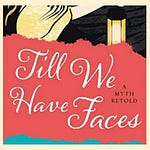Welcome back:
When we hear someone speak, we know them in a deeper way because of the nuances of inflection and tone. We can—through a person’s voice—measure mood, heartache, and agenda.

In memoir writing, dialogue is tricky because unless you taped every conversation how can you prove Aunt Clara said this or that? And even if you did have proof, what if Aunt Clara didn’t want you to use her words? And what if you did write about Aunt Clara, and what she had to say, and then—true or not—your entire family sided with Aunt Clara and proceeded to cast you out for the audacity to be a story teller?
This a sticky situation to be sure, but we cannot give up on dialogue in our memoirs…
…we need to try, because insofar as nonfiction attempts to be an honest record of the observant mind, dialogue matters. We recall voices, not summaries; we observe scenes in our head, not expository paragraphs.
~ Tell it Slant, 3rd Edition
Many memoir writers don’t use quotation marks around the words as a way to convey they are not verbatim quotes. Others will cue the reader as I discussed a few posts back. And still others believe that the reader of memoir is smart enough to realize that the quotes are not supposed to be provable. In Blackbird, I used quotes trusting the reader would understand I culled from memory and because I like the way quotations look on the page. It’s classic. And I wasn’t alone. Elizabeth McCracken did in An Exact Replica of a Figment of my Imagination, as did Tobias Wolff in This Boy’s Life, as did Bernard Cooper in A Bill From My Father. (All extraordinary memoirs I might add, and as you know, I’m committed to mentioning only memoirs I like…so…).
You get to decide…
…how to present your dialogue, or if to use it at all. But know that dialogue is as essential to creative nonfiction as it is to fiction and that is an important component of scene. Without it, something of the lived experience is lost. Which would be a shame.
Now, a pitfall of dialogue includes the data-dump:
For example:
“I’m going to the store down the street on Fourteenth and Broadway.”
“You mean Fred Meyer’s?”
“Yes. I am going to Fred Meyers now and will be back at four this afternoon.”
Unless you intend to write a flat story about boring people (and if you do, by all means, carry on) you’ll need to learn how to write dialogue that conveys a person’s unique character.
In Crazy for the Storm, we have such an example:
How long, Dad? I said.
About thirty minutes, Boy Wonder, he said. We might get a look at your championship run as we come around Mount Baldy.
Paid subscribers, thank you and read on.
Everyone else, I invite you to become a paid subscriber which means the world to a working writer, like me. Plus, you get to continue on with this terrific teaching. 🤗
Listen to this episode with a 7-day free trial
Subscribe to Blackbird's Flight School with Jennifer Lauck to listen to this post and get 7 days of free access to the full post archives.














